You've found the custom request page! Here you will find general information on what to expect when creating a custom request. Read through the following page carefully, then decide if a custom order is right for you.
If you're ready to create a custom request, go there now by CLICKING HERE.
This isn't a true "menu," only a reference of what to expect when making a custom order. I'm pretty flexible, so don't be afraid to reach out to me at support@lhsoaps.com.
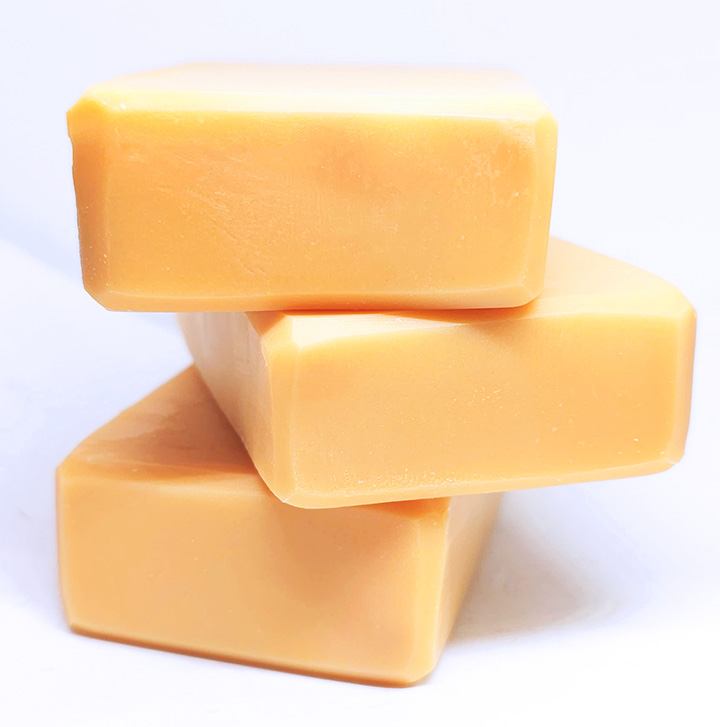
This is an example of just a solid-colored bar.
The easiest design to create, you can choose one of any color of the rainbow, outside the rainbow, or just keep it uncolored for the most natural look.
This design is limited to one color
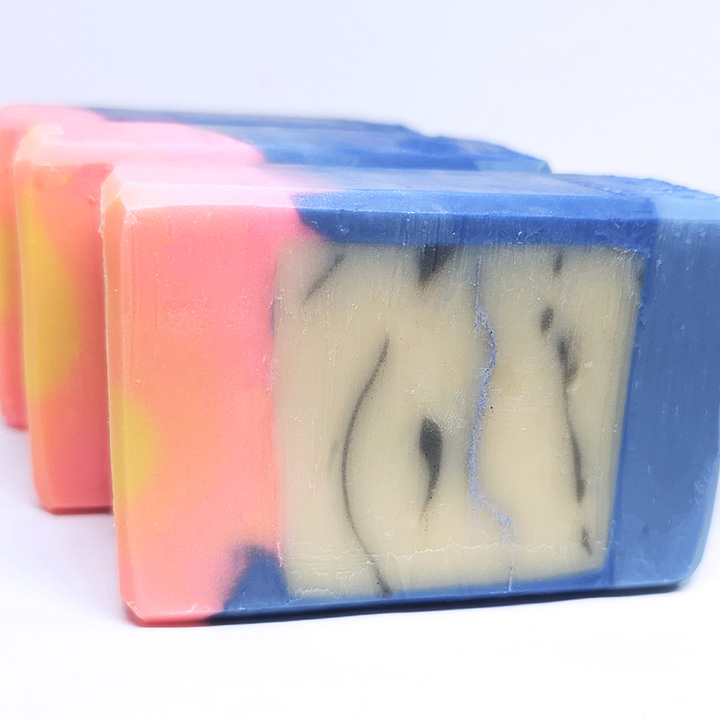
Just as the name implies, Birchwood is an effect that makes the soap look like the familiar white trees with scattered dark spots. While this design is not limited to the white/ivory and black/brown of birch wood, the design looks best with two contrasting colors.
In the example picture, the interior bar (white & black) is the example of birch wood. The colored outer portion is called a "frame," which is unavailable at the moment.
Loaf mold style only - This technique requires at least 2 colors, and is limited to 2 colors for now.
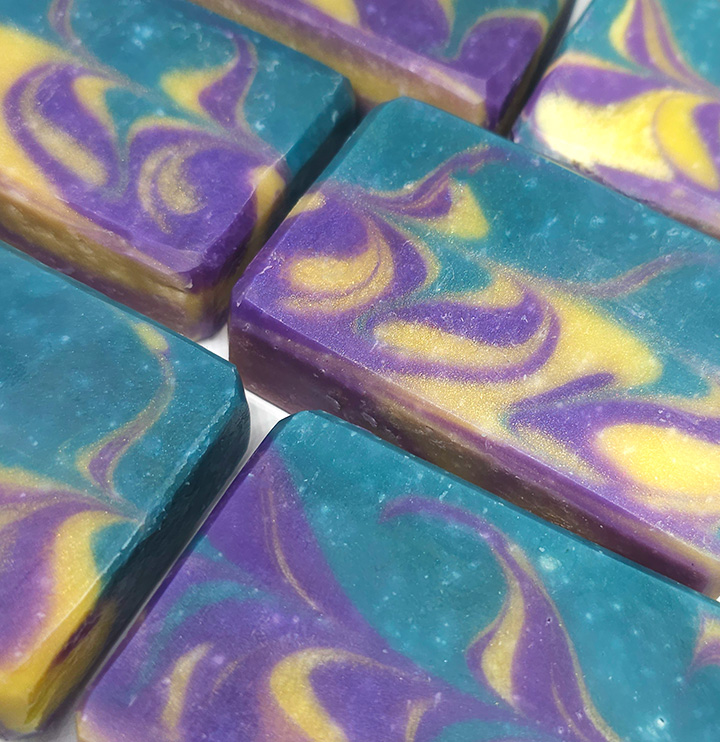
The butterfly swirl uses a solid color on one half of the mold, and either one or more colors on the other side, and swirled together to make a unique look that when cut, resembles a butterfly. This design does not allow for fancy tops due to the cutting method - Loaf mold style only.
Choose the solid side as your main color, and let me know what the remaining colors are, or if you only want 2 colors. This design requires at least 2 colors.
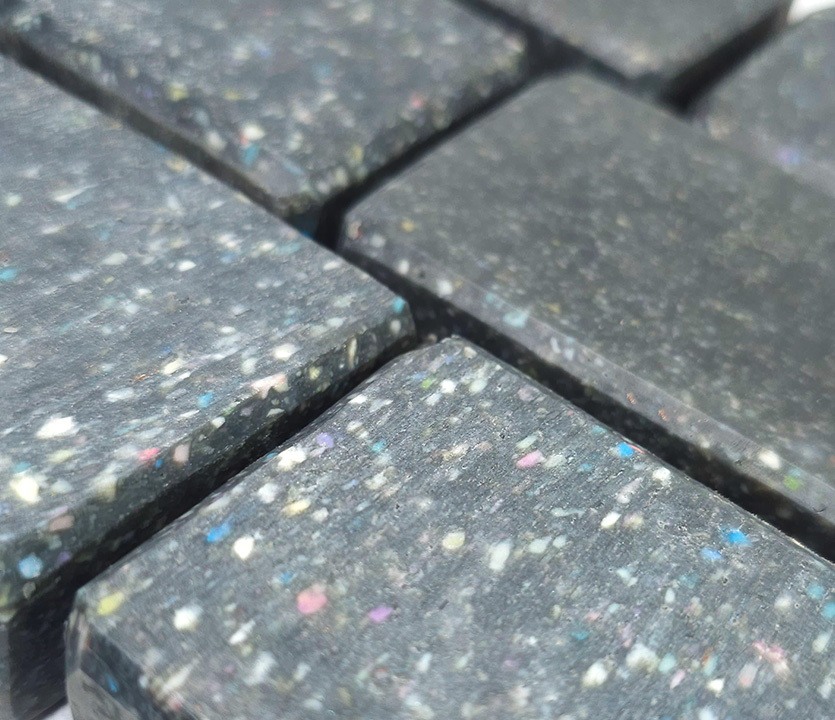
The ciaglia technique involves taking scraps from other batches and blending them with a solid color base, giving a "confetti" effect in the finished soaps. Ciaglia is a great technique for helping reduce the amount of soap waste and creates an intriguing look that blends in with any decor.
This technique requires at least 1 color, but is limited to 3 colors (not including the confetti)
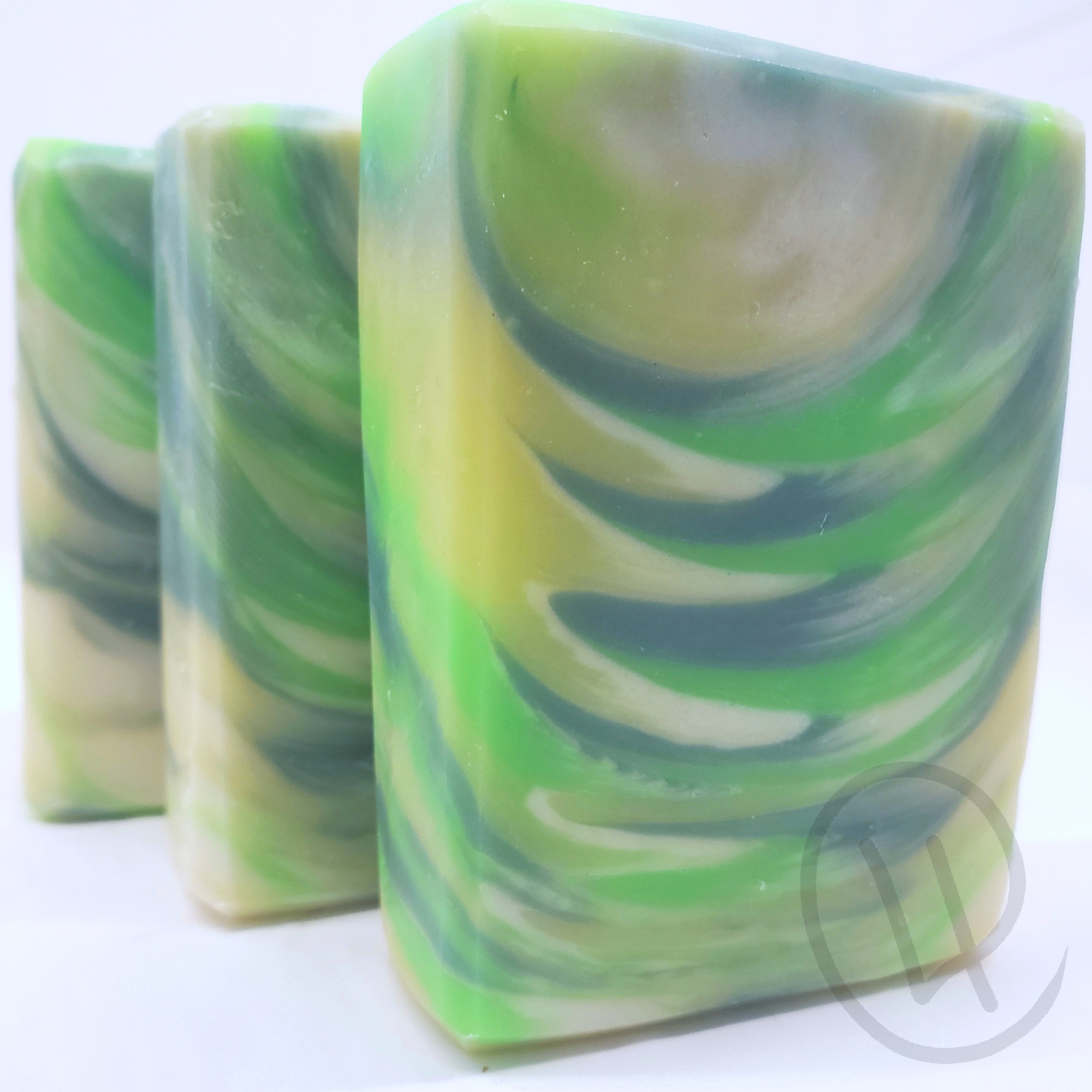
The clamshell technique can use anywhere from 2 colors and more to create a "shell" like appearance up and down the bar.
Each bar is different and the pattern can vary among the batch.
Loaf or slab mold style only - This technique requires at least 2 colors.
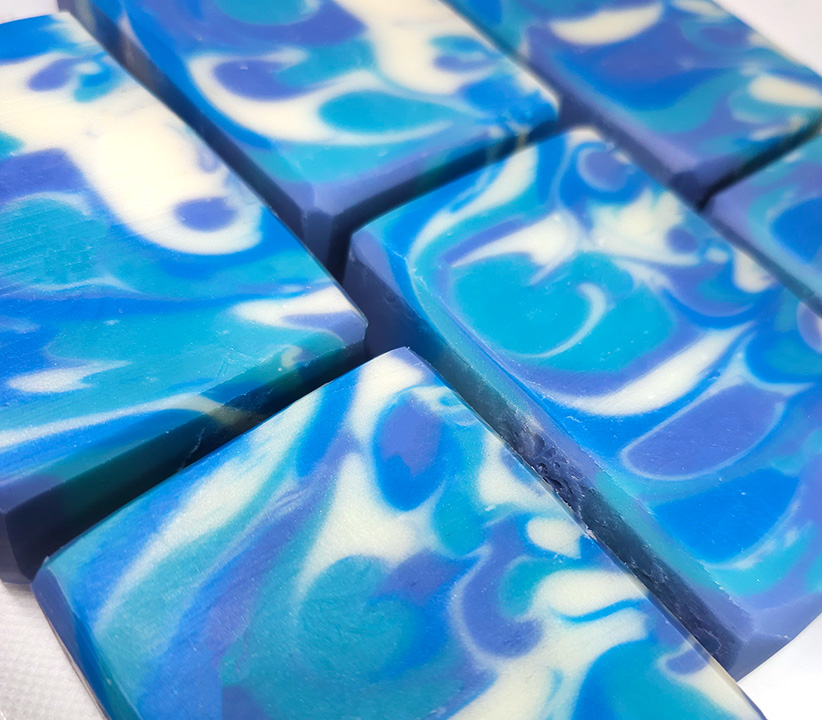
One of the most simple and beautiful techniques is the drop swirl. It is so easy in fact, that it's not hard to create a batch with several colors.
Loaf mold style only - Both techniques require at least 2 colors.
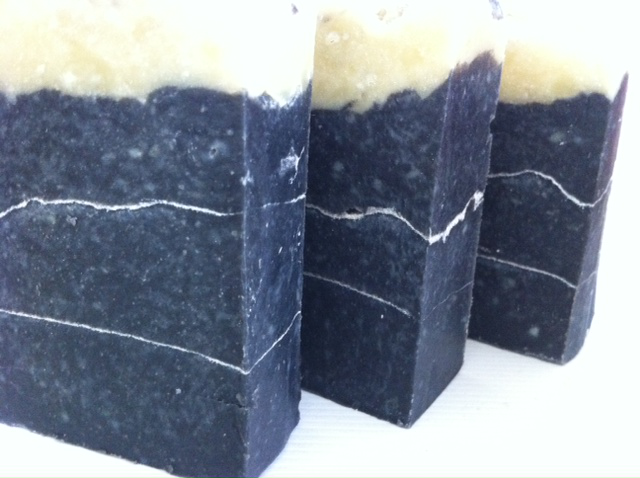
The fault line takes advantage of contrasting colors by creating a jagged mica line through the center of the bar.
Loaf mold style only - This technique works best with a solid color and fault line in the center, or as a split technique (see below). The tops can have decorative elements with more than one color.
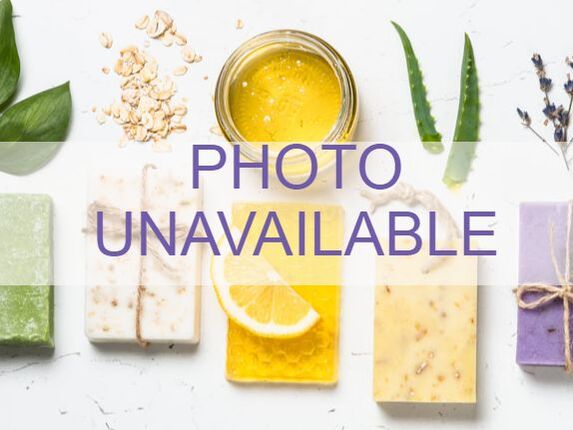
The leaf center, or feather pull swirl is poured in such a way that when cut, the finished bar appears to have a leaf, or feather in the center.
Loaf mold style only - This technique requires at least 2 colors.
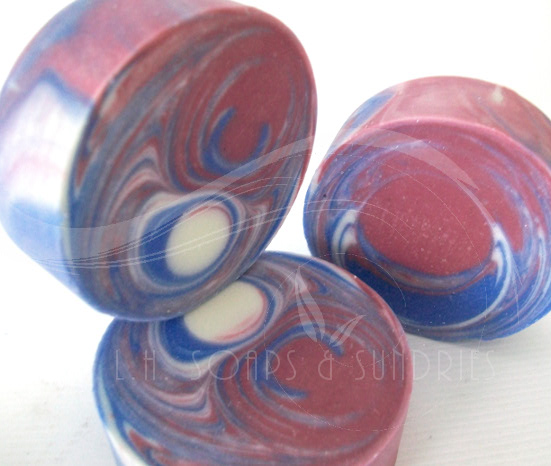
Funnel pour is similar to column pour in that the batter is poured down a funnel into a mold. The image to the left includes a stencil pull, which I still haven't mastered yet, so I don't offer that.
This method is limited to either a slab mold or a circular shape (tube mold).
This technique requires at least 2 colors and is not available for decorative tops.

Otherwise known as "Mod Circles" or "Wall Pour," Hypno sway is a unique circle pour that looks "hypnotic."
Loaf or slab mold style only - This technique requires at least 2 colors. This design does not allow for fancy tops due to the cutting method.
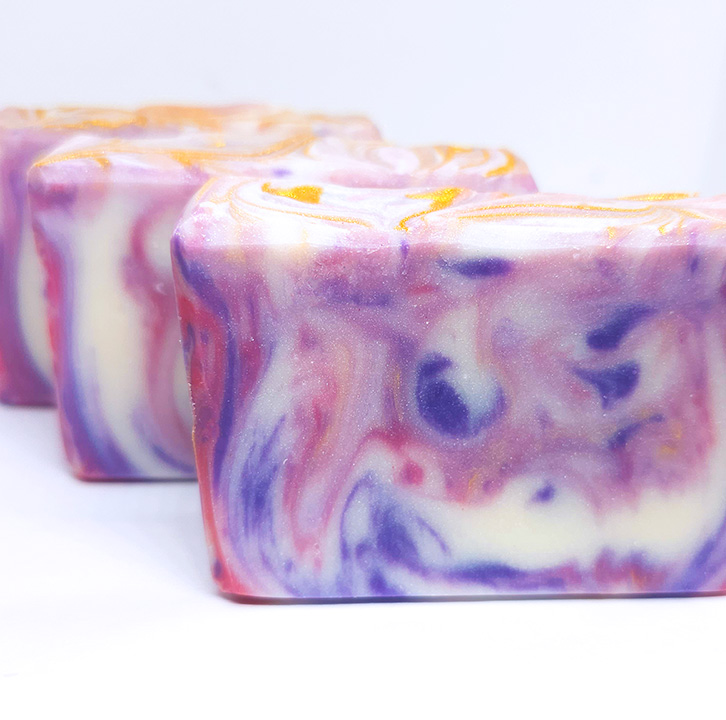
In the pot swirl is one of the more simple techniques and can have up to 6 colors! The random beauty in these bars is what sets it apart, as each bar will be wholly different than the next.
This technique requires at least 2 colors, although at least 3 would have more character.
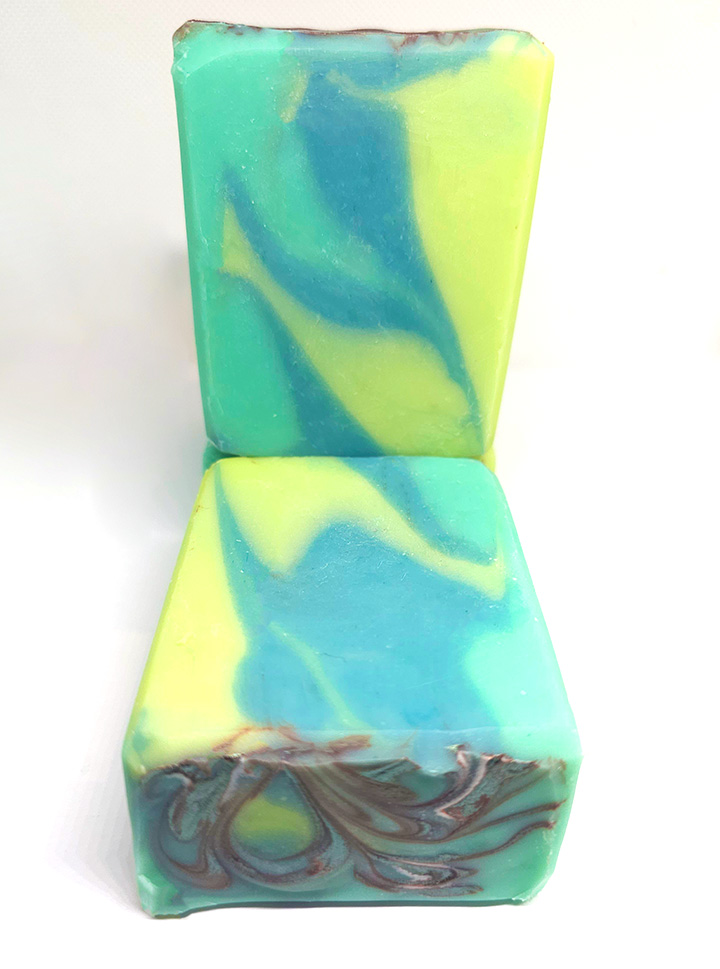
The mantra swirl takes three different colors and sways them together to create a lovely calligraphy effect.
Loaf mold style only - This technique requires at least 2 colors (one color will be duplicated to create the three divisions - make sure to describe which color you want to be duplicated).
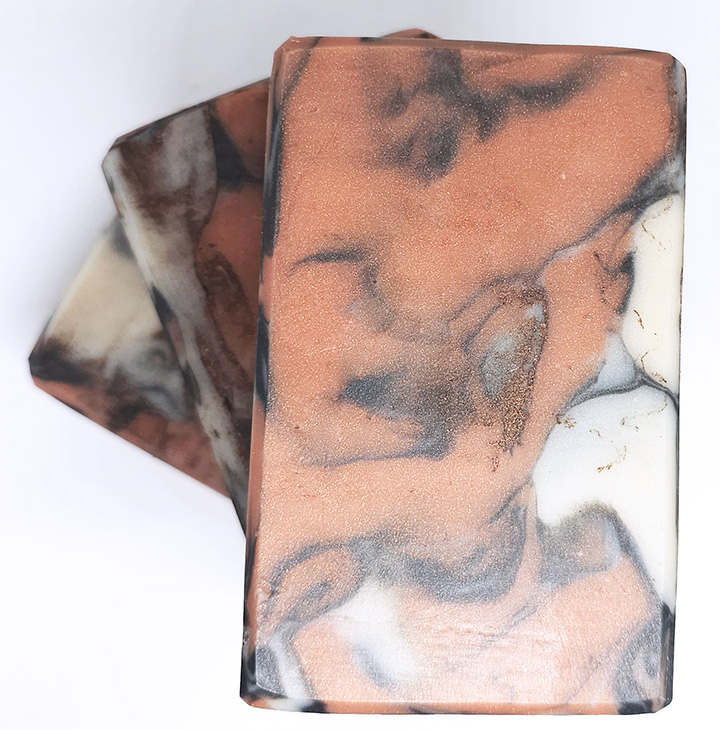
The marble technique is poured in such a way that when cut, the finished bar resembles a piece of marble.
This technique requires at least 2 colors. Best in a loaf mold, but can be poured in a slab.
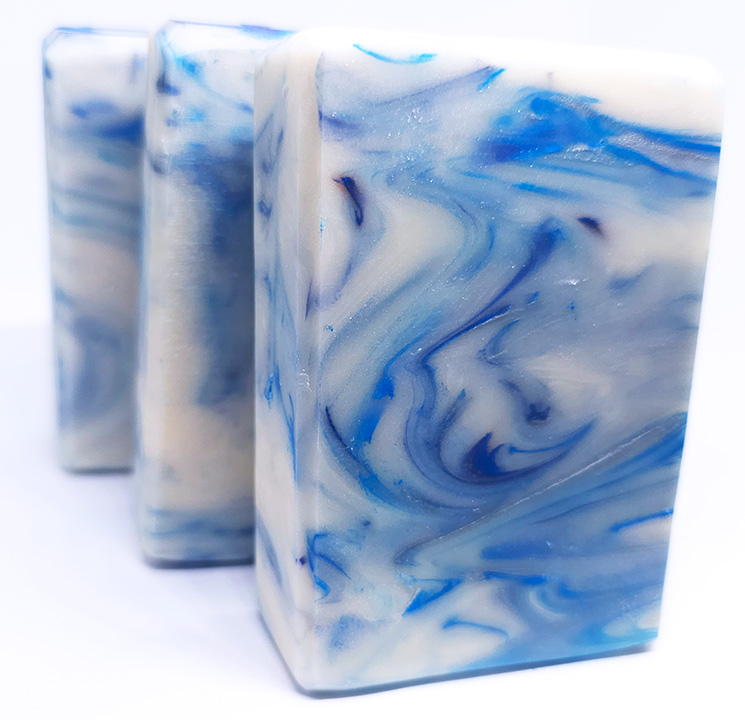
The mica swirl can be used pretty much in any style, but the example is an in-the-pot swirl with mica integrated throughout.
This technique requires at least one base color and one mica color.

This style is the precursor to peacock swirling in which lines of color are dragged down into looping lines. If you check out the peacock design below, nonpareil is what exists between the "balloon" shape.
Slab mold style only - This technique requires at least 2 colors and is not available for decorative tops.
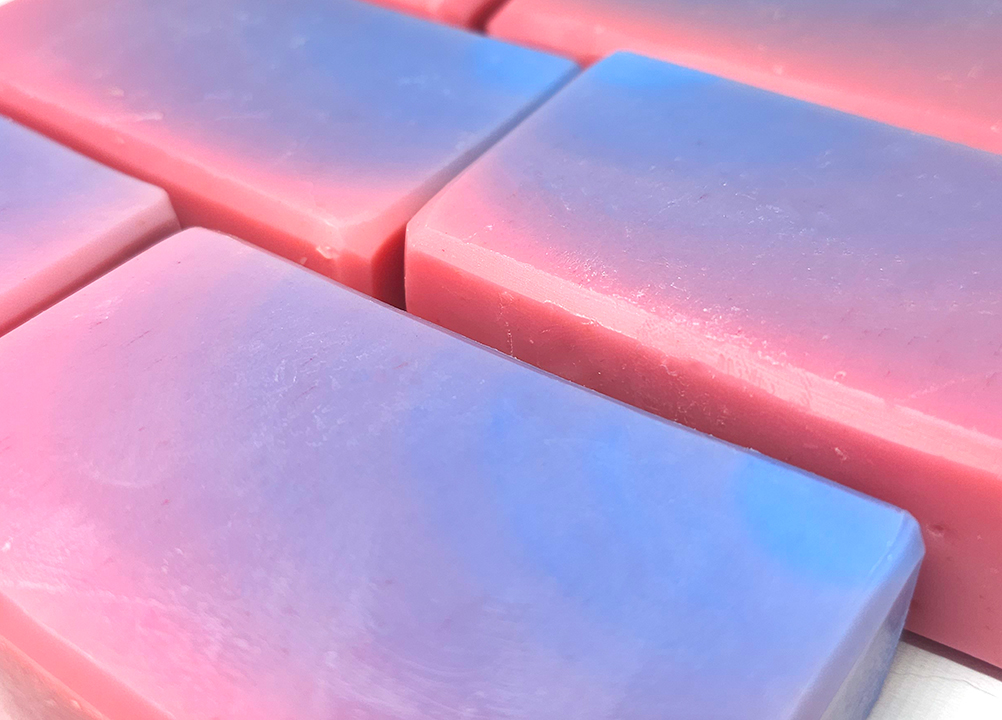
Get creative with ombre! The example image was made with pink and blue only, coming in the center to create purple. Do it with any color and white, or complimentary colors, such as red and yellow, or blue and green. It's best not to choose purple/yellow, blue/orange, or red/green, as these will turn brownish in the middle (unless that's what you're going for)!
Loaf mold style only - This technique requires at least 2 complimentary colors.
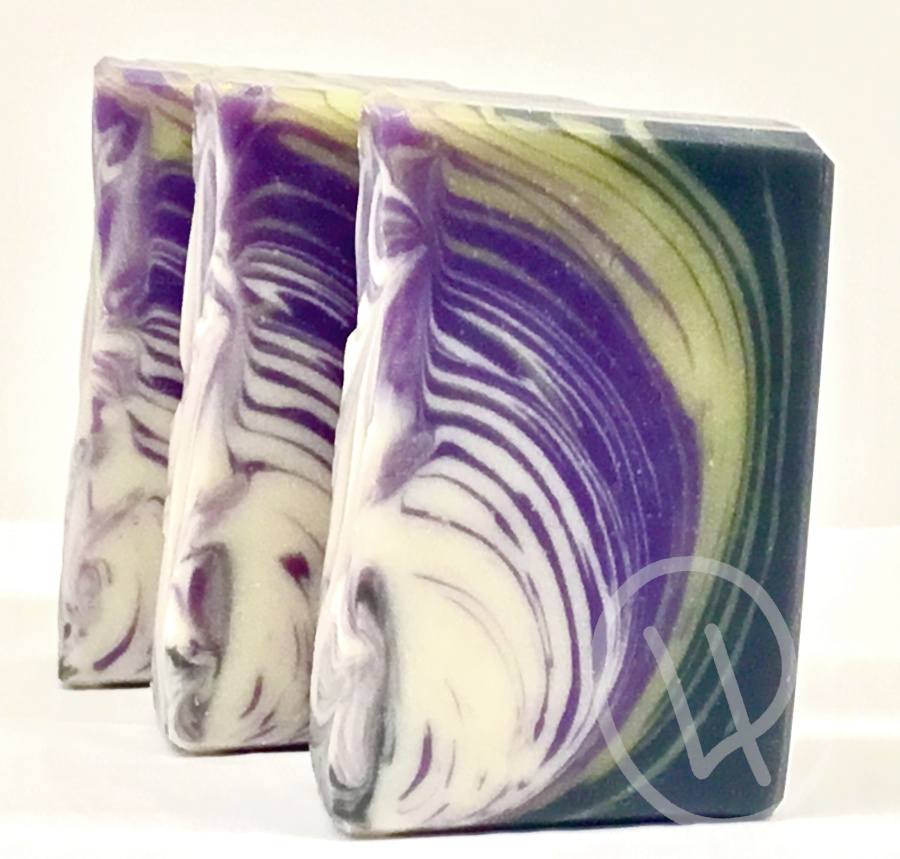
The third easiest style on the list, One Pot Wonder is a more controlled in-the-pot swirl, creating a surfing wave down the bar.
Loaf mold style only - This technique requires at least 2 colors.
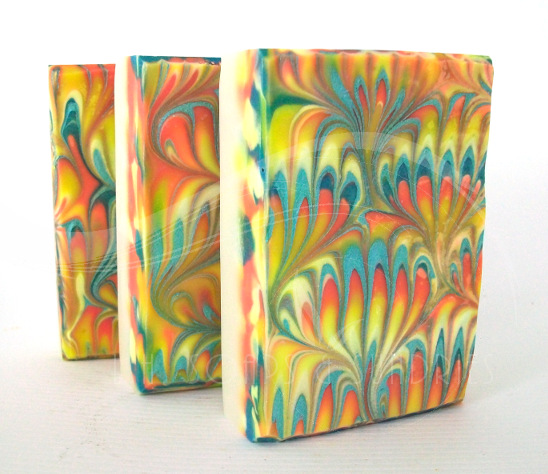
Peacock takes nonpareil to the extra level! Stripes of color are laid down in a slab, then dragged downward to create the nonpareil. Afterwards, looping balloons are drawn into the design to mimic the style of a set of peacock feathers.
Slab mold style only - This technique requires at least 2 colors and is not available for decorative tops.
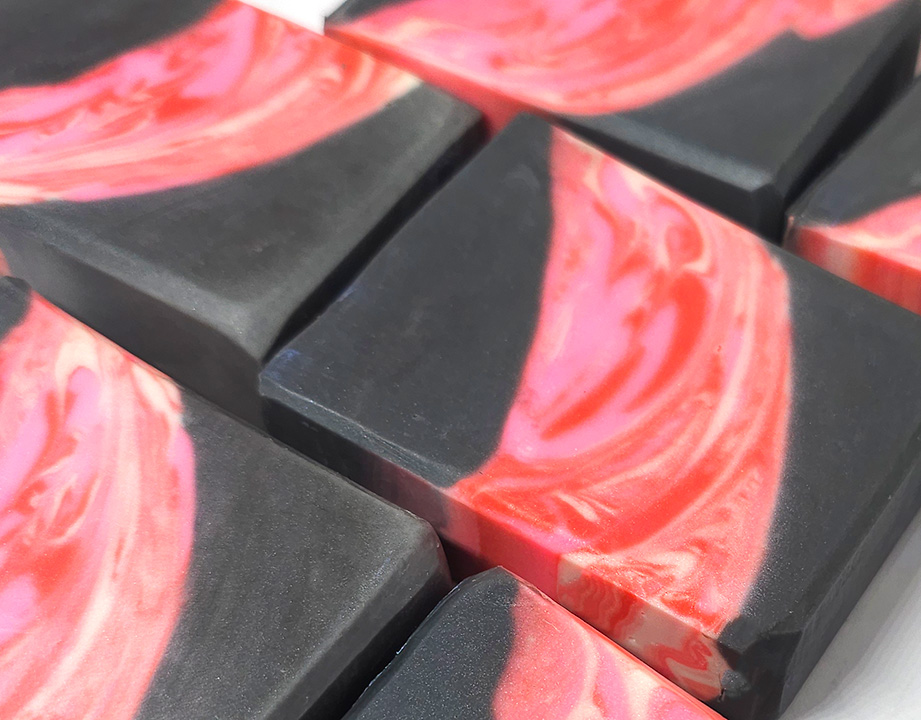
This soap is made of two techniques, similar to a "geode" style down the center separated by two fault lines. If you choose split technique in the drop down box, make sure to specify what design you'd like to run through the center as well as the mica color you'd like for the fault line in the description. The one pictured has a gold fault line with spoon swirl in the center.
Loaf mold style only - This technique requires at least 2 colors.
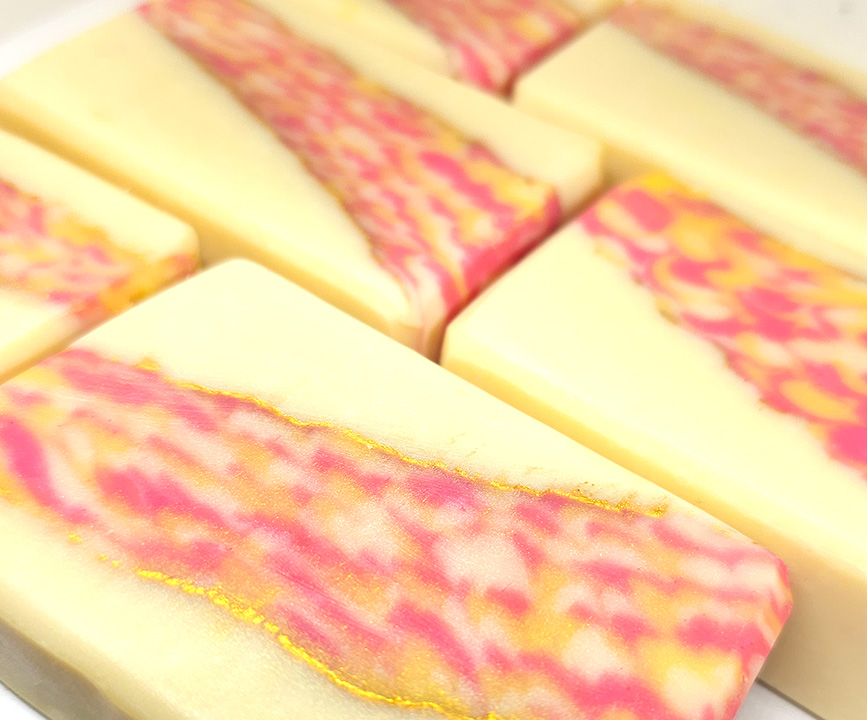
Similar to the drop style, spoon swirl has smaller and several drops within the bar. The soap image is a split technique with an example of spoon swirl in the center (surrounded by a gold fault line).
Loaf mold style only - This technique requires at least 2 colors.
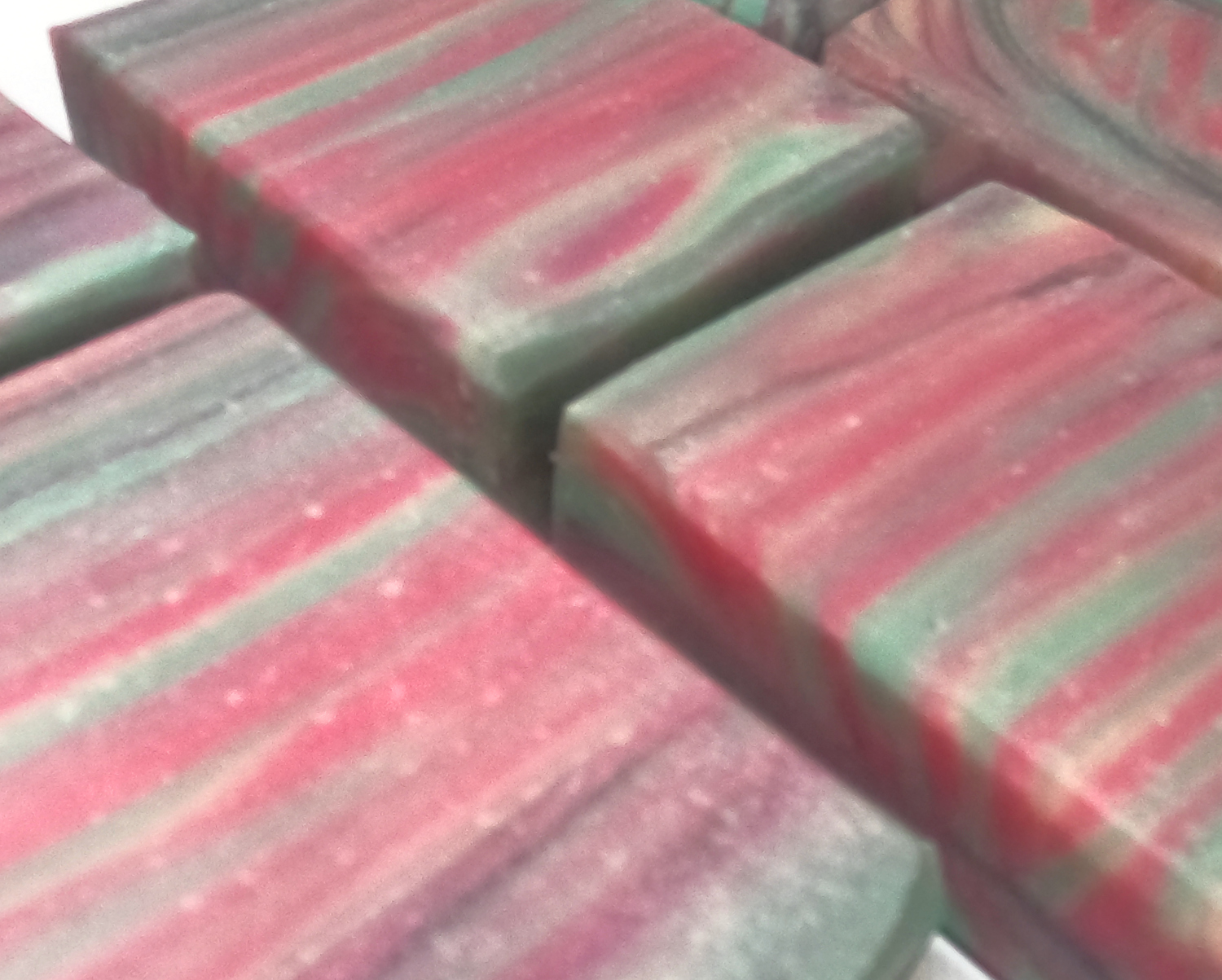
Thin lines is simlar to woodgrain, without the knots. The soap is poured thin, creating delicate striping.
Loaf and slab style mold style only - This technique requires at least 2 colors, and is not available for decorative tops.
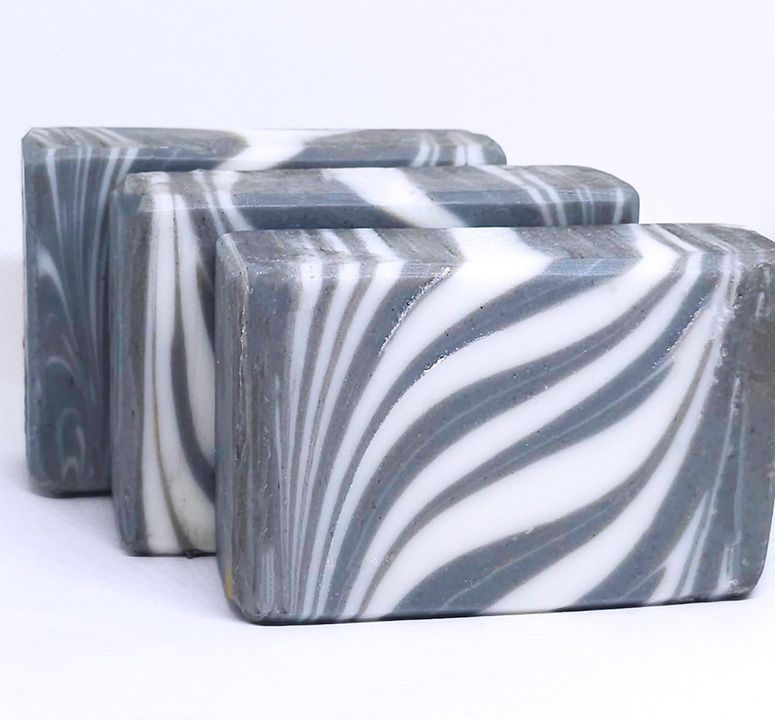
The lovely Taiwan Swirl creates movement with sharp stripes and beauty with contrasting colors.
Loaf mold style only - Technique requires at least 2 colors.
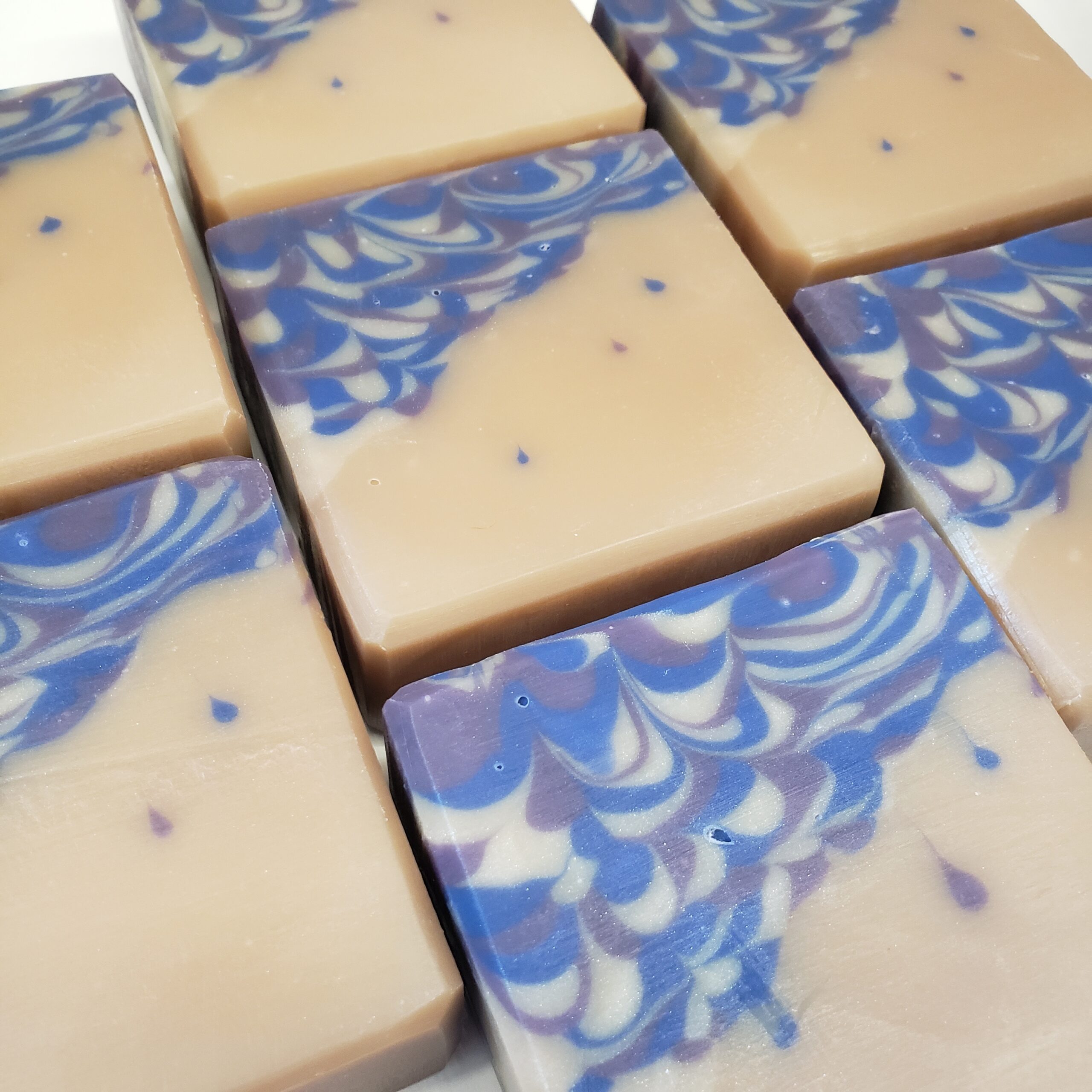
The soap to the left has two techniques, the drop swirl and the tear drop, and can also be considered a "split technique." The bottom shows what the teardrops look like in a solid base, and the top shows the different colors used in the drop swirl.
Loaf mold style only - Both techniques require at least 2 colors.
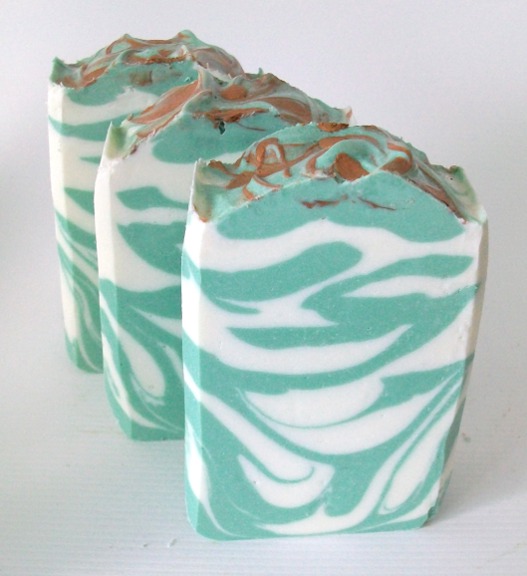
The tiger stripe can be viewed as one large drop swirl. The batter is poured in a line down the center of a loaf mold, one after the other, creating a dipping effect as seen here. Each line can be staggered to create visual interest.
Loaf mold style only - This technique requires at least 2 colors.
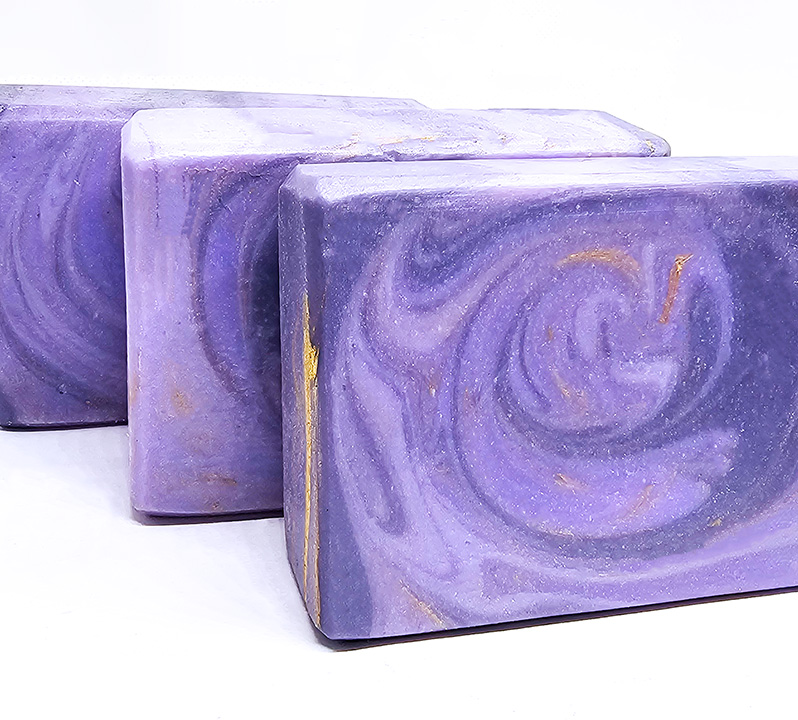
A versatile design that creates a spiraling vortex in the middle of the soap!
This technique requires at least 2 colors, and can be created in a loaf or a slab mold. Although it hasn't been done yet, it's a possibility it could be done in a cylinder mold.

The woodgrain is my specialty! Created just like thin lines, the woodgrain includes knots and imperfections, as you would see on a piece of timber.
Loaf mold style only - This technique requires at least 2 colors and is unavailable for decorative tops.
Soap pictured is a part of the artisan soap on a budget project.